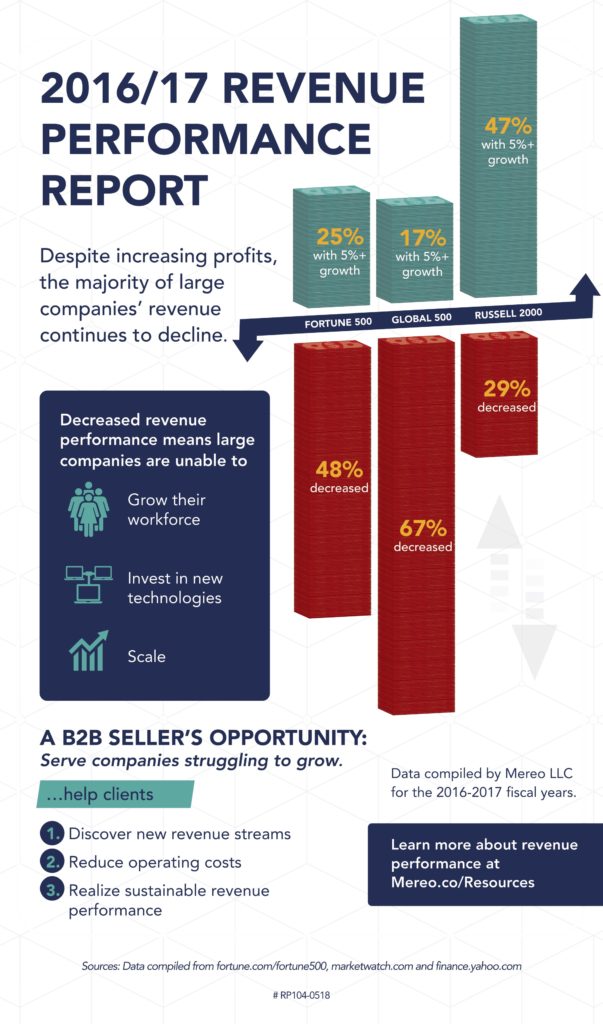It is always best to be striving for revenue growth. That seems obvious, yet there are times when the marketplace is not ripe for growth — and other times when it is and leadership is getting in its own way.
The following are anecdotes of good, bad and misleading periods of revenue growth. Read them and decide — which narrative arc does your company fit right now?
A tale of good revenue growth.
Company A wanted to accelerate revenue growth but it was relying on antiquated market positioning (spend management), while also lacking consistency in sales process and the support required to develop and enable a global sales organization on a new go-to-market platform. With Mereo’s help, Company A transformed itself. Rather than adding new sellers to feed revenue growth, Company A invested in its current sales team while simultaneously turning to marketing – for consistent, differentiated buyer-level messaging frameworks – and training for the new Cloud system. In just two years, its revenue growth skyrocketed from 3% to a CAGR of 11%.
A tale of bad revenue growth.
Company B was taking part in a merger of three other B2B organizations. Despite help from outside consultants, the merger was not well assimilated, which is a common channel to revenue growth. Rather than deciding from the get-go who would be in charge of merging all these positions and re-allocating employees, people ended up fighting for positions. There were no joint value propositions. There were no genuine cross-sells or upsells taken advantage of as a means of creating more value for clients. In the end, these three companies acted as if they had still maintained separate brands rather than product lines. And as a result, they lost revenue over time and shrunk.
A tale of misleading revenue growth.
In Company C’s case, they were doing all the right things but the macroeconomics at the time did not support revenue growth. Go back in time with me to the 2008 recession. Company C was among many other businesses at the time that were experiencing a revenue lull. Yet, this lack of growth was not necessarily a bad thing because the market was shrinking, therefore Company C was in fact still growing faster than the marketplace.
Similarly, in recent years (see 2016-17 infographic above) the prevailing trend is that earnings are growing but the top line is not; essentially companies are cutting their way to profitability growth. The opportunity for revenue growth exists, but an unwillingness to invest is hampering the company – despite the profit growth displayed in the financials
If you would like to explore ways your company can be experience good, healthy revenue growth, look to the Mereo Growth Solutions to learn more.









